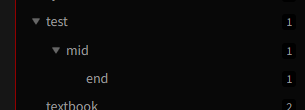I have some taxonomy entries in my notes. It turns out that I end up changing the taxonomy at times (adding/removing common ancestors), and then my cards are no longer reasonably consistent unless I put in a lot of work.
I’ve come up with this method:
taxonomy-index.md: (can become quite large, but that’s kind of the point)
- eukaryota>animalia^animalia
- eukaryota>animalia>bilateralia>chordata^chordata
- eukaryota>animalia>bilateralia>chordata>vertebrata^vertebrata
- eukaryota>animalia>bilateralia>chordata>nonspinea^nonspinea
- eukaryota>animalia>bilateralia>chordata>vertebrata>tetrapodia^tetrapodia
^^Each of line is a branch of the taxonomy tree - and animalia for example links to the page for the taxonomy entry of animals. Order only matters for maintainability - so I sort them alphabetically and that’s good enough.
Now in my file on say, dogs, I can say
bio-taxonomy-dogus-dogigenus.md:
[[bio-tax#^tetrapodia|taxonomy]]
Dogus dogigenus
Woof!
and that generates a mouseover link “taxonomy” that has the hierarchical reference I want.
If I want to insert a common ancestor or take one out, I can do it in the taxonomy index file, using the <option>-click selection for multiple lines at once.
